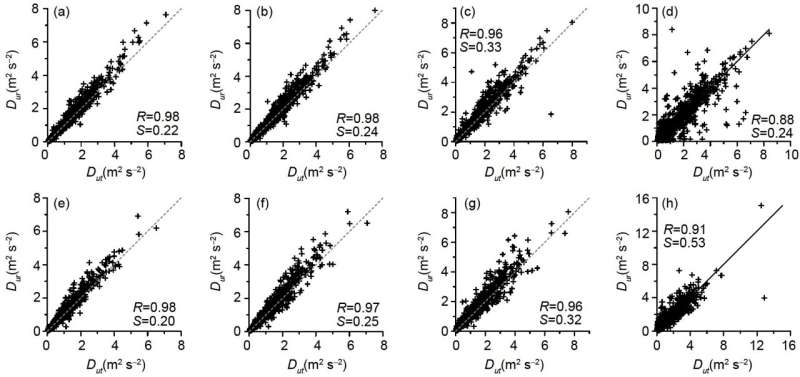This article has been reviewed according to Science X's editorial process and policies. Editors have highlighted the following attributes while ensuring the content's credibility:
fact-checked
peer-reviewed publication
trusted source
proofread
Multi-site observation of large-scale eddies in the surface layer of the Loess Plateau

A study recently published in the journal Science China Earth Sciences was led by Dr. Chen of the Northwest Institute of Eco-Environment and Resources, Chinese Academy of Sciences. Based on the principle of turbulence correlation and ensemble averaging, his team first used four-site observations of atmospheric turbulence under complex conditions.
On the basis of the fact that atmospheric turbulence in the atmospheric boundary layer is usually random and stationary, the time series data of each point were combined with the spatial distribution to form a long time series. This can be used to analyze the various states of regional turbulence observation, and to more comprehensively analyze turbulence structure and estimate turbulence spectra.
Using the four-site observation data under the complex conditions of the Loess Plateau region, it was demonstrated that the various states of turbulence can be more easily satisfied with four-site turbulence observations on the scale of the entire atmospheric boundary layer (<1 hour time scale).
The comparison between the velocity second-order structure function determined by a single site and the velocity second-order structure function between two sites directly verified the theory of turbulence correlation. Therefore, the turbulence structure and turbulence flux determined by the newly established long time series data are more representative of the regional turbulence field.
More information: Jinbei Chen et al, Multi-site observation of large-scale eddies in the surface layer of the Loess Plateau, Science China Earth Sciences (2023). DOI: 10.1007/s11430-022-1035-4
Journal information: Science China Earth Sciences
Provided by Science China Press




















